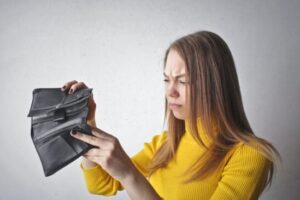Foreign exchange refers to the process of buying or selling one currency for another. When you travel or send money overseas, you’re participating in the global foreign exchange market by converting your funds to another currency. Countries, businesses and the people who work there all play their part in forex.
Because the value of any currency is constantly changing, we can take advantage of these fluctuations with the goal of making a profit. Aspiring investors and professionals have created an income from this process. Of course, like any investment, there’s a lot to learn about forex, and mastering forex trading takes time and experience.
Here’s a primer on the fundamentals of forex to help you get started.
Trading in Pairs
One of the advantages of forex trading is that you only need to consider two currencies for each trade, as currencies always trade in pairs. This makes the process of determining how much one currency weighs against another much easier.
Each pair has a certain designation, for example EUR/USD for Euros and U.S. dollars and each pair has a market price. The market price determines how much of one currency you can buy for the other. If the market price of the EUR/USD is 1.1450, you can buy that amount of dollars for a Euro.
Forex Brokers
Aside from enough capital, you need a forex broker in order to start trading. A broker has numerous responsibilities, including providing market prices to customers, sending your trades to the market, returning information about the outcome of your trades and sometimes also calculating and paying the taxes you owe for your profits.
If you want to learn more about forex brokers, be sure to check out InvestinGoal’s comprehensive guide detailing everything you need to know about how brokers work and how you can find the most suitable broker for you. Check out their ‘what is a forex broker’ article to get started.
Point in Percentage Values
Each currency moves in pips, or Point in Percentage values, which refers to a certain decimal place in a pair depending on its value. For example, in a EUR/USD pair, it will be the fourth decimal place, whereas in a pair containing Japanese Yen, it’ll be the second decimal place.
One needs to understand pip values and how to determine them for each currency in order to move forward. Much of the trading process is done by your broker, but it’s important to know how to read the market and do these calculations yourself in order to maximize your profits.
Learning Forex
There are many resources available online where you can learn the ins and outs of forex trading. You can also use trading simulators to practice your own trades without spending any money. Watch how values move over time and learn the trends to get a clear idea of what’s going on.
From here, it all comes down to learning and putting that knowledge into practice. Open up a paper trading (“fake money”) account and start doing some trades before using any of your own cash. Always be sure to make informed decisions and stay away from scams.



